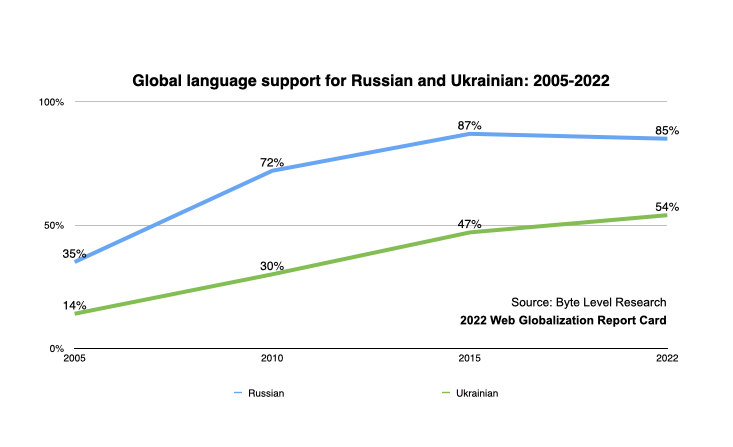For companies with global aspirations, Russian has long been considered a “must support” language.
These days, that is no longer the case.
But even before Putin decided to invade Ukraine, the Russian language had been slipping, ever so slightly, in global website support.
While support for Ukrainian has been steadily rising.
I’ve been tracking the languages supported by the leading global brands for nearly 20 years and, as you can see here, both Russian and Ukrainian have seen support more than double over the past 15 years. In other words, eight out of ten global websites now support Russian while half of all global websites support Ukrainian.

Russian and Ukrainian share a common script: Cyrillic, though the language are quite distinct, relying on a different mix of Cyrillic characters.
Rarely do global brands drop support for one of the world’s most popular languages. Yet over the past few years, Delta Airlines and Hermès have dropped support for Russian.
To be clear, this data does not reflect the past few months. And as recently as last year, Amazon added support for Russian. Though Apple, Netflix and Spotify added support for Ukrainian over the past year.
Actions speak louder than words. And when it comes to going global on the Internet, translation is action. Languages reflect the actions of companies that wish to succeed within these markets.
Ukraine has been one the great European success stories over the past few years while Russian has been economical stagnate. And it’s worth noting that Russia has more than three times as many citizens as Ukraine, which makes Ukraine’s linguistic rise all the more remarkable.
So perhaps this invasion was driven as much by envy as by territorial greed.
The great tragedy of course is that both languages, so closely related in script, are now so closely associated with war.
